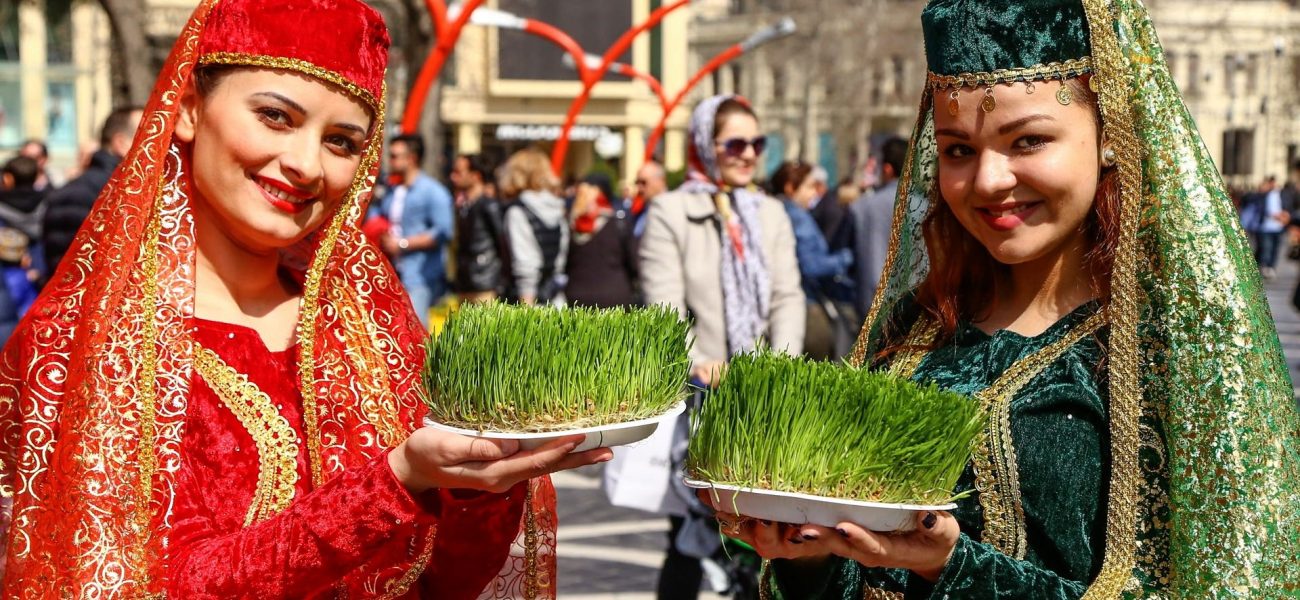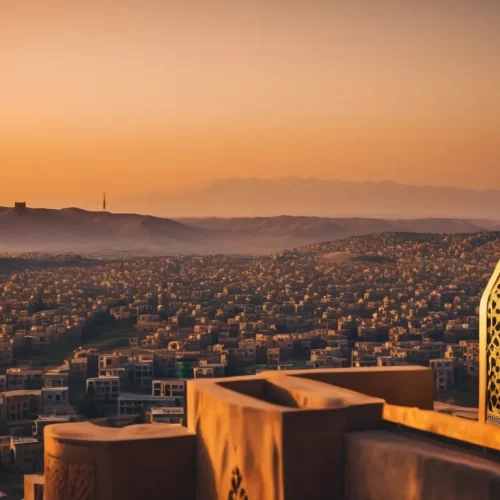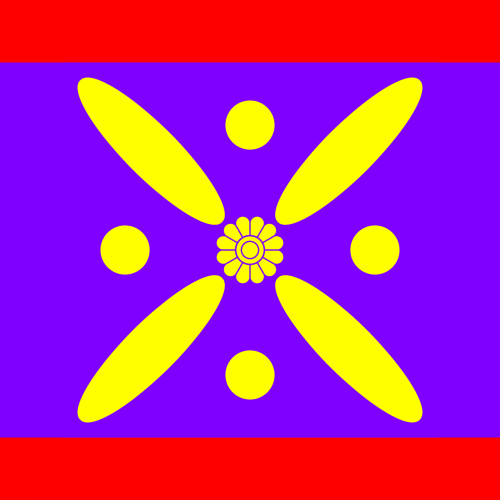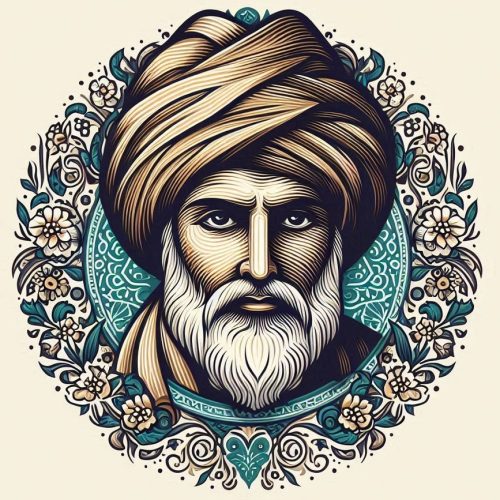In the enchanting land of Iran, where the whispers of history mingle with the fragrance of saffron and the melodies of ancient poetry, a celebration unfolds like a mesmerizing story – Nowruz, the Iranian New Year. This annual spectacle, steeped in tradition and symbolism, weaves a tapestry of renewal, community, and cultural richness that transcends the sands of time.
Origins in Ancient Wisdom: A Tapestry Woven by Zoroastrian Threads
Celestial Harmony: Zoroastrian Roots
The journey of Nowruz unfolds against the backdrop of Zoroastrianism, an ancient Persian religion that revered the natural world and celestial phenomena. Nowruz, deeply rooted in the cosmic dance of the universe, finds its genesis in the teachings of Zarathustra, the prophet of Zoroastrianism. The vernal equinox, marking the beginning of spring, symbolizes the eternal struggle between light and darkness, a theme resonating with the core tenets of Zoroastrian philosophy.
Jamshid and the Haft-Seen Table: Mythical Beginnings
Embedded in the fabric of Nowruz is the myth of King Jamshid, whose ascension to the throne on this auspicious day transformed the celebration into a royal extravaganza. As the legend goes, Jamshid’s reign brought prosperity and joy, intertwining the fate of the nation with the spirit of Nowruz. The creation of the Haft-Seen table, laden with symbolic treasures, became a homage to the mythical beginnings of this grand celebration.
Jamshid’s Golden Era:
In the mythical tales, Jamshid’s rule is often described as a golden era. His wisdom, benevolence, and the ability to unite his people created an era of prosperity and happiness. Nowruz, as the day marking his ascension, pays tribute to the legendary king and the ideals he embodied.
Haft-Seen Table as Homage:
The Haft-Seen table, a central element of Nowruz, becomes a canvas for homage to Jamshid’s legacy. Each item on the table tells a tale of virtues and values, creating a tableau that transcends the mundane and weaves together the mythical and the tangible.
The Cosmic Dance: Nowruz and the Vernal Equinox
Nowruz aligns itself intricately with the cosmic rhythms of the vernal equinox, a celestial ballet where day and night stand in perfect equilibrium. This dance of the heavens, mirrored in the earthly celebration of Nowruz, symbolizes not only the changing seasons but also the perpetual cycle of life, death, and rebirth.
Zoroastrian Influence on Nowruz:
Zoroastrianism, with its reverence for the elements and the cosmic order, profoundly influences the symbolism of Nowruz. The alignment of the festival with the vernal equinox becomes a testament to the Zoroastrian belief in the eternal struggle between Ahura Mazda, the god of light, and Angra Mainyu, the force of darkness.
Nowruz as a Cosmic Reset:
The vernal equinox serves as a cosmic reset button during Nowruz, wiping away the past and ushering in a new beginning. This cosmic alignment not only connects the earthly festivities to celestial phenomena but also underscores the profound philosophical underpinnings embedded in the celebration.
Nowruz and Zoroastrian Values: A Tapestry of Virtues
Nowruz is not merely a calendar event; it is a manifestation of Zoroastrian values and virtues. The celebration, rooted in the ancient wisdom of Zarathustra, weaves a tapestry of goodness, righteousness, and harmony with nature.
Nowruz as a Reflection of Zoroastrian Ethics:
The Haft-Seen table, laden with symbolic items, reflects Zoroastrian ethical principles. Virtues such as love, compassion, purity, and the pursuit of wisdom find expression in the elements carefully chosen to adorn the table.
Connection to Nature:
Zoroastrianism’s emphasis on the sacredness of nature resonates through Nowruz. The celebration encourages a deep connection with the natural world, promoting respect for the environment and fostering an understanding of the delicate balance that sustains life.
Nowruz and the Eternal Flame: Illuminating the Path Forward
As Nowruz unfolds, the presence of the eternal flame, a quintessential element in Zoroastrian tradition, adds another layer of depth to the celebration. The flame symbolizes the divine light of Ahura Mazda, dispelling darkness and guiding humanity towards a path of righteousness.
Haft-Seen and the Flame:
Within the Haft-Seen tableau, the candle or “Sham” represents the eternal flame. Its flickering glow becomes a metaphor for the divine light, casting away shadows and illuminating the journey of renewal that Nowruz signifies.
Zoroastrian Temples and Nowruz:
In Zoroastrian temples, Nowruz is celebrated with solemn rituals, where the eternal flame takes center stage. The convergence of the divine flame and the earthly festivities mirrors the interconnectedness of the spiritual and material realms.
Nowruz as a Cultural Continuum: Preserving Zoroastrian Heritage
Nowruz stands as a cultural continuum, preserving the legacy of Zoroastrianism in the tapestry of Iranian identity. Despite the passage of millennia, the celebration remains a testament to the enduring impact of Zoroastrian wisdom on the cultural, social, and spiritual fabric of Iran.
Nowruz and Cultural Identity:
The celebration of Nowruz, deeply rooted in Zoroastrian traditions, becomes a cultural touchstone for Iranians. It serves as a reminder of the enduring influence of Zoroastrianism on the collective identity of the nation.
Zoroastrian Heritage in Modern Nowruz:
In contemporary Iran, Nowruz continues to echo the Zoroastrian heritage in both its rituals and symbolism. The preservation of ancient practices in the modern celebration reflects a conscious effort to maintain a connection with the cultural roots embedded in Zoroastrianism.
In tracing the origins of Nowruz through the threads of Zoroastrian wisdom, we find a tapestry woven with celestial harmony, mythical beginnings, and a profound connection to ancient values. Nowruz, with its roots deeply embedded in Zoroastrianism, becomes a timeless celebration that transcends eras, encapsulating the essence of renewal, cosmic balance, and the eternal flame that guides humanity towards a brighter future.
The Haft-Seen Table: A Kaleidoscope of Symbolism
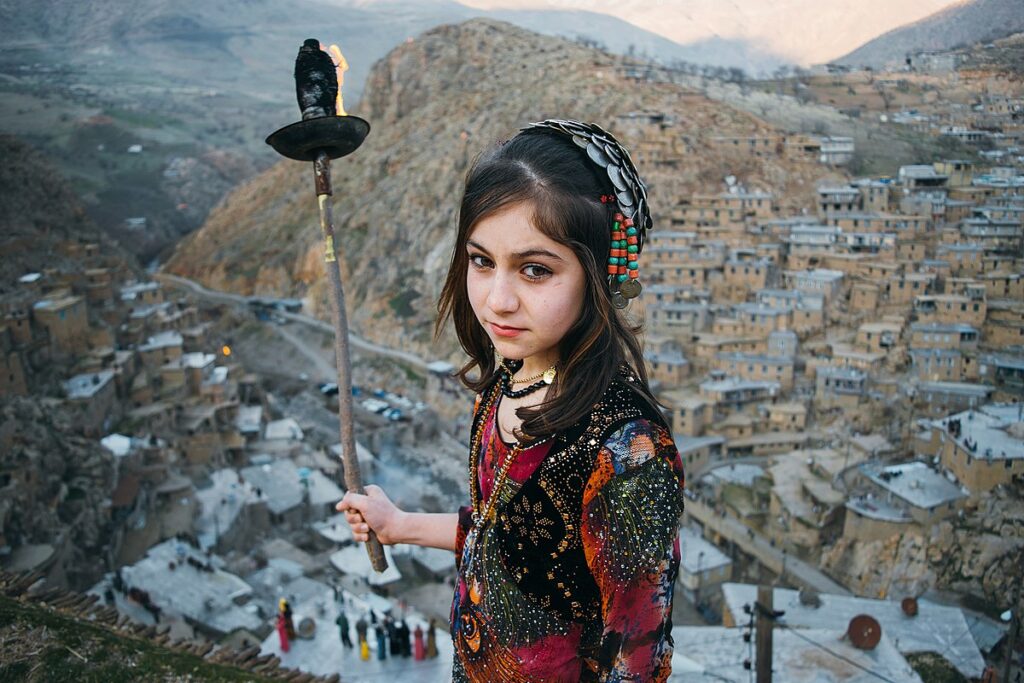
Sabzeh: Sprouting Life
Upon the Haft-Seen table, a verdant bed of Sabzeh, or sprouted wheat or lentils, takes center stage. This living entity symbolizes rebirth and the cyclical nature of life. As the seeds sprout and grow, they embody the renewal of nature and the promise of a new beginning.
Samanu: Sweet Purity
Nestled beside the Sabzeh is Samanu, a sweet pudding made from wheat germ. This delicacy, with its golden hues, symbolizes power, strength, and the sweetness of life. Samanu becomes a metaphorical feast, inviting all to savor the richness of existence.
Senjed: The Heavenly Connection
A cluster of dried oleaster fruit, known as Senjed, graces the Haft-Seen table. Senjed, with its sweet and tangy flavor, represents love and compassion. It serves as a reminder of the interconnectedness between heaven and earth, uniting the earthly realm with divine virtues.
Seer: The Essence of Life
Shining like rubies, Seer, or garlic, adds its essence to the tableau. Beyond its culinary use, Seer symbolizes medicine and protection, warding off malevolent forces. It stands as a guardian, ensuring the well-being of those who partake in the Nowruz festivities.
Somāq: Tangy Transformation
A deep crimson hue emerges with the presence of Somāq, or sumac berries. This tangy addition to the Haft-Seen table embodies the sunrise and the triumph of light over darkness. Somāq, like the changing seasons, transforms the tableau with its vibrant energy.
Serkeh: Aging Gracefully
The Haft-Seen tableau embraces the element of Serkeh, or vinegar, reminding celebrants of the inevitability of aging and the wisdom that accompanies it. Serkeh becomes a metaphor for the passage of time, encouraging reflection on the beauty found in maturity.
Sekkeh: Prosperity and Fortune
Glistening coins, or Sekkeh, represent prosperity and financial abundance. As they reflect the light, these coins become tokens of good fortune, symbolizing the hope for a year filled with economic blessings and wealth.
Chahārshanbe Suri: Dancing with Fire – A Fiery Prelude to Nowruz

As the sun begins its descent on the eve of the last Wednesday before Nowruz, a spirited energy courses through the air, setting the stage for Chahārshanbe Suri, the Festival of Fire. This exhilarating prelude to Nowruz ignites the night with flames that dance in rhythm with the beating hearts of celebrants, creating an atmosphere charged with both anticipation and ancient ritual.
Bonfires Igniting the Night Sky
As dusk falls, communities across Iran gather in open spaces, parks, and courtyards, where the focal point becomes the towering bonfires. These fires, fueled by the enthusiasm of the crowd, symbolize the cleansing of the past year’s misfortunes and the preparation for the rejuvenation heralded by Nowruz.
Sacred Symbolism of Fire:
Fire, an elemental force revered in Zoroastrianism, plays a central role in Chahārshanbe Suri. Its sacred symbolism extends beyond the physical warmth it provides, encompassing purification, enlightenment, and the triumph of light over darkness.
Community Bonding:
The bonfires, communal in nature, serve as focal points for the convergence of people from all walks of life. Families, friends, and strangers alike gather around the flames, forging connections as they share the collective experience of ushering in the new year.
Leaping Over Flames: Ritualistic Joy
Chahārshanbe Suri invites the spirited participation of revelers, young and old, in a joyous dance with the flames. The traditional act of leaping over bonfires takes on a profound significance, symbolizing the desire to leave behind hardships and emerge unscathed into the purity of the new year.
Purification Through Fire:
The act of jumping over the flames is imbued with the belief that the fire possesses purifying qualities. Participants, with hearts full of hope and anticipation, engage in this ancient ritual, embracing the warmth and energy that the flames are believed to bestow.
Warding Off Negativity:
Chahārshanbe Suri, with its fiery leaps, becomes a symbolic gesture of warding off negativity and misfortune. The flames are seen not only as a source of physical warmth but also as agents of spiritual cleansing, allowing participants to cast away the shadows of the past.
Chants and Songs: Harmonizing with the Flames
The night resonates with the rhythmic beats of drums and the spirited chants of celebrants, creating a symphony that harmonizes with the crackling bonfires. Traditional songs and rhythmic invocations infuse the air with a sense of unity, as the collective voices rise to meet the flickering flames.
Ancient Melodies:
Chahārshanbe Suri’s celebrations are often accompanied by traditional music and chants that have echoed through the corridors of time. These melodies, passed down through generations, infuse the occasion with a timeless quality, bridging the past with the present.
Folklore and Invocation:
The chants and songs during Chahārshanbe Suri carry echoes of folklore and ancient invocations. They become a communal expression, weaving a narrative that intertwines the joys of the present celebration with the spiritual dimensions of the past.
Fireworks Painting the Night: Celestial Celebrations
As the night sky becomes a canvas, vibrant bursts of color illuminate the darkness, courtesy of fireworks that adorn the Chahārshanbe Suri festivities. These dazzling displays add an extra layer of exuberance, symbolizing the joyous anticipation of the imminent arrival of Nowruz.
Colorful Illumination:
Fireworks, like miniature constellations, paint the night sky in a kaleidoscope of colors. Each explosion becomes a symbol of the collective hopes and dreams that find expression in the communal celebration of Chahārshanbe Suri.
Celestial Connection:
The spectacle of fireworks carries a celestial connection, mirroring the cosmic dance that Zoroastrianism holds dear. The bursts of light become ephemeral stars, guiding the community towards a future illuminated by the promise of the new year.
Contemporary Adaptations: Ancient Traditions in a Modern Context
In the 21st century, Chahārshanbe Suri continues to thrive as a cultural phenomenon, adapting to the nuances of modernity while preserving its ancient essence. Social media platforms become virtual bonfires, where individuals share their experiences, photos, and messages of goodwill, extending the celebration beyond physical boundaries.
Virtual Gatherings:
In an era marked by digital connectivity, Chahārshanbe Suri embraces virtual gatherings. People from different corners of the world come together through video calls, sharing the joy of leaping over symbolic flames and exchanging heartfelt wishes.
Global Participation:
The festivity transcends geographical limitations as Iranians in diaspora and enthusiasts from diverse backgrounds partake in Chahārshanbe Suri. Social media becomes a global stage where the ancient ritual gains resonance, uniting communities in the shared experience of dancing with fire.
Chahārshanbe Suri – A Spirited Prelude
As the fires of Chahārshanbe Suri subside, leaving behind embers of warmth and camaraderie, the stage is set for the grand spectacle of Nowruz. This fiery prelude, with its ancient rituals, communal dances, and the symbolism of purifying flames, becomes a vibrant overture to the larger narrative of renewal that unfolds with the dawn of the Persian New Year. In the dance with fire, Chahārshanbe Suri not only bridges the past and the present but also ignites the collective spirit of a people, infusing the night with the promise of a brighter, purified tomorrow.
The Dance of Colors: Preparing for Nowruz
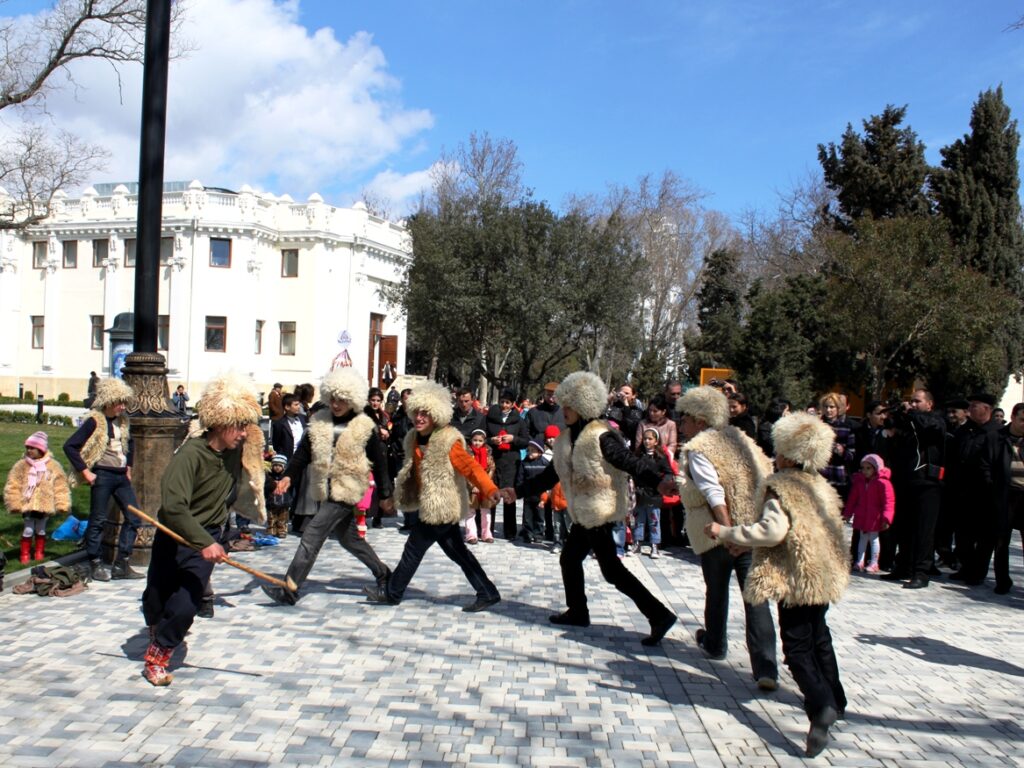
In the bustling bazaars and lively streets, a kaleidoscope of colors paints the scene. Families engage in the time-honored tradition of Khaneh Tekani, or spring cleaning, purifying their homes and hearts for the arrival of Nowruz. The aroma of hyacinth and narcissus, heralding the coming of spring, fills the air as the vibrant Haft-Seen tables take their places in homes across Iran.
The Moment of Nowruz: A Symphony of Joy
As the sun aligns with the celestial equator, casting its golden glow upon the ancient land, the moment of Nowruz arrives. Families gather around the Haft-Seen table, dressed in their finest attire, ready to embrace the dawn of the new year. With the first breath of spring, the festive atmosphere envelops Iran like a warm embrace.
Nowruz Music and Dance: A Melodic Celebration
As the sun ascends on the day of Nowruz, the air becomes infused with the enchanting notes of traditional Iranian music, signaling the commencement of a harmonious celebration. Nowruz, the Iranian New Year, is not only a visual spectacle but also a symphony of melodies and rhythmic dances that echo through the centuries, connecting the past with the present in a melodic celebration of life, renewal, and shared joy.
Traditional Iranian Music: Echoes of Centuries
Santur’s Ethereal Tones:
The santur, a Persian dulcimer, takes center stage in the musical ensemble of Nowruz. Its ethereal tones, produced by striking delicate strings with wooden hammers, evoke a sense of tranquility and transport listeners to a realm where time seems to stand still. The santur’s presence is not merely musical; it’s a cultural emissary that carries the echoes of Persian history.
Tar’s Poetic Resonance:
The tar, a plucked string instrument, adds a poetic resonance to Nowruz melodies. Its strings, delicately plucked by skilled hands, produce a hauntingly beautiful sound that intertwines with the celebratory spirit of the occasion. The tar becomes a storyteller, weaving tales of ancient traditions and the enduring spirit of the Iranian people.
Ney’s Soulful Breath:
The ney, a reed flute, breathes soulful melodies into the air. Its haunting, melancholic notes evoke a range of emotions, from introspection to exuberance. As the ney player skillfully maneuvers the instrument, the sound becomes an expression of the collective sentiments that accompany Nowruz – a tapestry of memories, hopes, and the beauty of existence.
Dance of the Daf: Rhythmic Beats Echoing Through Time
Daf’s Percussive Heartbeat:
The daf, a traditional frame drum, provides the rhythmic heartbeat of Nowruz celebrations. Played with fervor and precision, its percussive beats create an irresistible invitation to dance. The daf transcends its role as a musical instrument; it becomes a conduit for communal expression, fostering a sense of unity as individuals join in the rhythmic dance.
Sufi Whirling: A Spiritual Dance:
In some Nowruz celebrations, particularly in regions influenced by Sufi traditions, the dance takes on a spiritual dimension. Sufi whirling, accompanied by the hypnotic sounds of the daf, becomes a meditative and ecstatic dance, symbolizing a spiritual journey towards divine union. This sacred dance adds a layer of depth to the celebratory atmosphere, bridging the temporal and the transcendental.
Nowruz Songs: Verses of Celebration
Nowruz-e Man: Anthem of Renewal:
“Nowruz-e Man,” a popular Nowruz song, serves as an anthem of renewal. Its verses, sung with fervor during the festivities, encapsulate the joy of welcoming the new year. The lyrics resonate with themes of hope, love, and the collective spirit of a community embracing the dawn of a fresh beginning.
Rhythmic Haft-Seen Chants:
The Haft-Seen table, adorned with symbolic items, becomes a focal point for rhythmic chants during Nowruz. As celebrants gather around the table, they engage in chants that express good wishes for the new year. These chants, often accompanied by clapping or the beats of the daf, infuse the atmosphere with an infectious energy.
Dance of Joy: Celebratory Movements
Lively Group Dances:
Nowruz brings people together in joyous group dances, reflecting the collective jubilation that marks the occasion. Whether in parks, gardens, or family gatherings, these dances are characterized by vibrant movements, colorful costumes, and the sheer exuberance of celebrants expressing their joy through rhythmic motions.
Regional Variations:
Across Iran, various regions contribute their unique dance forms to the Nowruz festivities. From the energetic and lively dances of the north to the graceful and symbolic movements of the south, the diversity of regional dances enriches the tapestry of Nowruz celebrations, showcasing the multitude of cultural expressions that thrive within the nation.
Nowruz in Modern Melodies: A Contemporary Twist
Fusion of Genres:
In the 21st century, Nowruz celebrations have embraced a fusion of traditional melodies with modern genres. Contemporary artists infuse Nowruz songs with elements of pop, jazz, and electronic music, creating a dynamic musical landscape that resonates with audiences of all ages. This fusion reflects the ever-evolving nature of cultural expression in the modern era.
Global Collaborations:
Nowruz transcends borders, and contemporary music collaborations amplify its global resonance. Iranian artists collaborate with musicians from diverse backgrounds, creating cross-cultural compositions that echo the universal themes of renewal, unity, and celebration. These collaborations serve as musical bridges, connecting people across continents in the shared joy of Nowruz.
Nowruz’s Harmonious Overture
As Nowruz unfolds, the music and dance become integral components of the celebration’s symphony. The traditional instruments, rhythmic beats, and jubilant dances create an atmosphere where the past and present converge in a harmonious overture. Nowruz, with its melodic celebration, not only marks the transition of seasons but also embodies the timeless spirit of a people whose joyous expressions through music and dance reverberate through the ages.
The Feast of Nowruz: A Culinary Odyssey
No Iranian celebration is complete without a culinary extravaganza, and Nowruz is no exception. The scent of saffron-infused rice, succulent kebabs, and an array of delectable sweets wafts through homes. Families come together to share a feast that mirrors the diversity of Iranian cuisine, embodying the spirit of unity and abundance.
Visiting Loved Ones: A Journey of Connection
Nowruz extends beyond familial bonds, embracing the larger tapestry of community. Iranians embark on a journey of connection, visiting friends and loved ones to share laughter, stories, and the warmth of Nowruz wishes. This tradition, known as “Eid Didani,” fosters a sense of belonging and strengthens the communal ties that lie at the heart of Nowruz.
Nowruz Around the World: A Global Celebration
As the story of Nowruz unfolds in Iran, its chapters extend across borders. Iranians in diaspora, as well as people from various cultural backgrounds, join in the celebration. Nowruz becomes a global phenomenon, a testament to the universal themes of renewal, hope, and the interconnectedness of humanity.
Nowruz in the 21st Century: Embracing Modernity
In the 21st century, Nowruz adapts to the rhythms of modernity while preserving its timeless essence. Social media becomes a virtual Haft-Seen table, where individuals from around the world share their Nowruz preparations and celebrations. Technology serves as a bridge, connecting people across distances and fostering a sense of global unity.
Nowruz Resonance in Literature and Arts
Nowruz, with its rich symbolism and cultural significance, inspires poets, writers, and artists. Persian literature, adorned with the verses of luminaries like Hafez and Rumi, captures the essence of Nowruz – a celebration that transcends temporal boundaries. Painters weave vibrant canvases, depicting the beauty and spirit of Nowruz in strokes that echo the colors of spring.
Nowruz, A Story Unfolding
As the sun sets on the day of Nowruz, the story echoes in the laughter of children, the fragrance of hyacinths, and the warmth of familial bonds. Nowruz, with its Haft-Seen table, the dance of Chahārshanbe Suri, and the melodies of celebration, weaves a narrative that transcends time – a story of renewal, connection, and the enduring spirit of a people who embrace the dawn of the new year with open hearts and joyous souls. In every Nowruz, a chapter unfolds, adding to the tapestry of this timeless celebration that continues to resonate across the ages.

